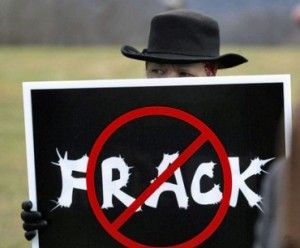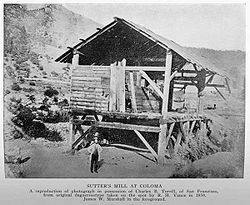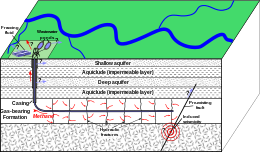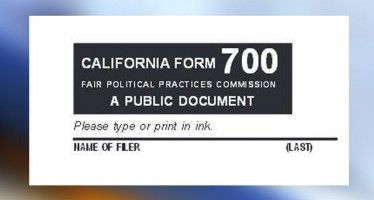Fracking survives CA Legislature — for now
July 2, 2013
By Katy Grimes
SACRAMENTO — After sitting through several recent marathon sessions in the Assembly, it was shocking to witness the powerful California environmental lobby lose its attempt to ban oil and gas hydraulic fracturing.
For this, Californians can be thankful.
That got me thinking. What if California’s powerful environmental lobby had been as powerful during the 1849 Gold Rush as it is today? Back then, they would have harassed gold pioneer James Marshall so much he would have quit. California never would have become the Golden State.
Hydrolic fracking for oil and gas has the potential to become the next Gold Rush — this time of black gold, Texas tea. But will the environmentalists stop it? Not yet — but maybe in the future.
A University of Southern California study, “Powering California: The Monterey Shale & California’s Economic Future,” looked at the development of the vast energy resource beneath the San Joaquin Valley known as the Monterey Shale. It found that hydraulic fracturing could create 512,000 to 2.8 million new jobs, personal income growth of $40.6 billion to $222.3 billion, additional local and state government revenues from $4.5 billion to $24.6 billion, and an increase in state GDP by 2.6 percent to 14.3 percent on a per-person basis.
There’s gold in them-thar hills
In 1848, while building a saw mill for John Sutter, contractor James Marshall found several gold nuggets. Shortly after Marshall’s discovery, gold was discovered in Feather River and Trinity River. Quartz and gold mining began in Mariposa County, Kern County and Grass Valley.
But if gold was discovered today, the Ocupational Safety and Health Administration would shut down Marshall’s gold mining operation for failing to put in hand rails on the work site walkways.
Marshall’s workers would be limited to eight-hour workdays, with two 10-minute breaks and a lunch hour. And they’d only be able to work five days a week.
The California Air Resources Board would penalize Marshall $10,000 a day for not having a catalytic converter on his sluice, and eventually shut him down when they decided his operation was contributing to global warming — unless, of course, he agreed to CARB’s mandatory participation in the cap-and-trade carbon auctions.
Traveling miners would be stopped and arrested for open carry of guns.
CalEPA would put Marshall through the CEQA ringer when he tried to open up another mining operation up river.
Sutter’s Fort in Sacramento wouldn’t be built. Between the building permits, penalties and labor violations, it would be red-tagged.
Even Levi Straus’s famous blue jean dye would be deemed toxic by the Department of Toxic Substances Control.
Free market facilitates business success
Environmentalists and others continue to argue that California would have been better off if gold had never been discovered. “Habitats were destroyed; entire species depleted; hillsides, streams, rivers, and watersheds destroyed,” claims Dr. Gayle Olson-Raymer at CSU Humbolt, in her class curriculum.
“Given its other natural advantages, it might have become just a populous and prosperous — but such prosperity would have been more gradual, orderly, and civilized,” Olson-Raymer said.
But the free market worked beautifully during the gold rush. It wasn’t just some gold miners who made fortunes. More fortunes were made by enterprising merchants than by miners and prospectors.
Likewise, it wouldn’t just be only the oil and gas companies enjoying the riches of the fracking boom; thousands, even millions of Californians would also create businesses because of the Monterey Shale fracking.
Gold Rush 2013
Today, California sits on one of the largest known deposits of recoverable oil and gas. California is sitting on top of the Monterey Shale, a 1,700 square mile oil-bearing shale formation primarily in the San Joaquin Valley that contains an estimated 15 billion barrels of oil.
The Monterey Shale formation is estimated to be several times bigger than the Bakken Shale formation, currently delivering a record economic boom to North Dakota.
But even as the fourth-largest oil producing state in the country, oil and gas production has been steadily declining here. Instead, California lawmakers turned their attention to wind and solar, and other types of alternative energy. The state has been implementing the Renewable Portfolio Standard, passed in 2011, which requires the state to be using 33 percent renewable energy by 2020.
Common sense in the Legislature?
While many thought the Democratic Supermajority in the California Legislature would be able to easily pass several bills to ban or heavily restrict hydraulic fracking, this has not happened in the Legislature so far this year. The bills all died or were killed.
In a surprising turn of events, there appear to be some lawmakers quite tuned in to the economic realities of hydraulic fracking for oil and gas, and how it may impact their districts.
All of the anti-fracking bills were either killed or pulled back by the end of June, despite the extraordinary efforts of California’s many eco-lobbyists.
AB 1323, by Assemblywoman Holly Mitchell, D-Los Angeles, was defeated, 24-37, with 18 Assembly members not even voting. It would have required drillers to file with state regulators “a written notice of intention to commence drilling.”
Sen. Fran Pavley, D-Agoura Hills, authored SB 4, which would have required a scientific study on the environmental effects of fracking, testing of nearby groundwater before and after drilling, and the creation of a state website for compiling data on fracking chemicals.
Pavley also called for halting fracking if the scientific study was not completed by January 2015. (UPDATE: Pavely’s SB 4 was passed in the Assembly Natural Resources Committee Monday, 6-3)
Divided Democrats
AB 7, by Assemblyman Bob Wieckowski, D-Fremont, was amended to include provisions from Pavley’s bill. But even in the Democratic-controlled Assembly, Wieckowski could not pass AB 7.
Of the 80 members of the Assembly, only 40 even voted. The final vote, after three attempted roll calls, was 25-15.
Assemblyman Steve Fox, D-Palmdale, and Assemblyman Mike Gatto, D-Los Angeles, were the only two Democrats to vote “no.”
The 32 “not-voting” Democrats were: Alejo, Ammiano, Bloom, Blumenfield, Bonta, Bradford, Brown, Buchanan, Chau, Dickinson, Eggman, Fong, Gonzalez, Hall, Roger Hernández, Holden, Levine, Lowenthal, Mitchell, Mullin, Muratsuchi, Pan, V. Manuel Pérez, Quirk, Rendon, Salas, Skinner, Ting, Weber and Yamada.
The “yes” votes were just as interesting: Achadjian, Atkins, Bocanegra, Bonilla, Ian Calderon, Campos, Chesbro, Cooley, Daly, Frazier, Garcia, Gomez, Gordon, Gray, Jones-Sawyer, Medina, Melendez, Nazarian, Perea, Quirk-Silva, Stone, Wieckowski, Williams and John A. Pérez.
The self-aware, “greener” Assembly members representing wealthier districts had no problem with killing the opportunities for oil and gas fracking in poorer regions.
Two others anti-fracking bills have been held back in the Appropriations Committee until next year. AB 1301 by Assemblyman Richard Bloom, D-Santa Monica, and AB 649 by Assemblyman Adrin Nazarian, D-Sherman Oaks, call for further studies of the environmental impact and potential threats associated with fracking.
Related Articles
Doctors rip idea of nurses playing doctor
Medical doctors have qualifications no other medical employee has: four years of college, four years of medical school, three to
Card Check Blazing Through Assembly
APRIL 7, 2011 By KATY GRIMES With a sucker punch from the Assembly Speaker’s office, the public notice rule for
State lawmakers’ financial interests now posted online
Mike McGuire made over $100,000 in 2014 as a Sonoma County supervisor and another $525 in parting gift certificates as







